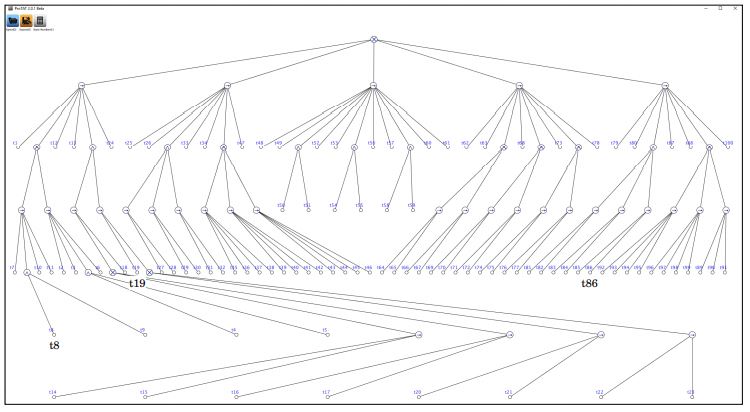Process tree-based analysis method of DECLARE relation constraints in acyclic bridge-less well-structured workflow nets
Main Article Content
Abstract
In this paper, we proposed a method to analyze workflows’ constraints whose templates are defined in a declarative language called DECLARE. Checking such constraints is important but known to be intractable in general. Our results show three things. First, utilizing a tree representation of workflow process called process tree, we provided necessary and sufficient conditions on the constraints. Second, those conditions enable us to not only check a given constraint in polynomial time but also find a clue for improving the net if it violates the constraint. Third, we revealed the relationship among the constraint templates.
Article Details

This work is licensed under a Creative Commons Attribution-NonCommercial-NoDerivatives 4.0 International License.
References
W.M.P. van der Aalst, “The application of Petri nets to workflow management,” J. Circuits, Sys- tems, Computers, vol.8, no.1, pp.21–65, 1998.
T. Murata, “Petri nets: properties, analysis and applications,” Proc. of IEEE, vol.77, no.4, pp.541–580, 1989.
M. Pesic, H. Schonenberg, W.M.P. van der Aalst, “DECLARE: Full support for loosely-structured processes,”Proc. of IEEE EDOC 2007, pp.287– 300, 2007.
DECLARE, https://www.win.tue.nl/declare/
F.M. Maggi, A.J. Mooij, W.M.P. van der Aalst, “User-guided discovery of declarative process models,”Proc. of IEEE CIDM 2011, pp.192–199, 2011.
M.S.B. Ab Malek, M.A. Bin Ahmadon, S. Yamaguchi, “Computational complexity and polyno- mial time procedure of response property prob- lem in workflow nets,” IEICE Trans. Fundamen- tals, vol.E101-D, no.6, pp.1503–1510, 2018.
S. Yamaguchi, M.A. Bin Ahmadon, Q.W. Ge, “Introduction of Petri nets: Its applications and security challenges,” in Handbook of Research on Modern Cryptographic Solutions for Computer and Cyber Security, Hershey, PA, USA, chapter 7, pp.145–179, 2016.
S. Yamaguchi, M.A. Bin Ahmadon, “Properties and decision procedure for bridge-less workflow nets,” IEICE Trans. Fundamentals, vol.E99-A, no.2, pp.509–512, 2016.
D. Nikovski, A. Baba, “Workflow trees for rep- resentation and mining of implicitly concur- rent business processes,” Mitsubishi Electric Re- search Laboratories Technical Report, TR2007- 072, 2007.
W.M.P. van der Aalst, J.C.A.M. Buijs, and B.F. van Dongen, “Towards improving the repre- sentational bias of process mining,”Lecture Notes in Business Information Processing, vol.116, pp.39–54, Springer-Verlag, Berlin, 2012.
M.A. Bin Ahmadon, S. Yamaguchi, “State num- ber calculation problem of workflow nets,” IE- ICE Trans. Information and Systems, vol.E98- D, no.6, pp.1128–1136, 2015.
S. Yamaguchi, “Polynomial time verification of reachability in sound extended free-choice workflow nets,” IEICE Trans. Fundamentals, vol.E97-A, no.2, pp.468–475, 2014.
M.A. Bin Ahmadon, S. Yamaguchi, “Convertibility and conversion algorithm of well-structured workflow net to process tree,” Proc. of CANDAR 2013, pp.122–127, 2013.
S. Yamaguchi, “Analysis of option to complete, proper completion and no dead tasks for acyclic free choice workflow nets,” IEICE Trans. Fun- damentals, vol.E102A, no.2, pp.336–342, 2019.


